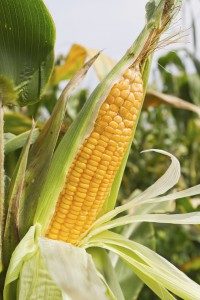by Calvin Trostle, Extension Agronomy, Lubbock, (806) 723-8432, ctrostle@ag.tamu.edu
Ron Schnell, Cropping Systems Extension Agronomy, College Station, (979) 845-2935, ronschnell@tamu.edu
In May we wrote in Row Crops Newsletter about the effect of harvesting dry grain on wheat yield and income. In June, Soil & Crop Sciences Extension published similar information to highlight the reduced income potential in grain sorghum from harvesting over-dry grain. Reports and on-line calculators for both crops are located on the respective small grains and sorghum pages at http://varietytesting.tamu.edu/
Though we are late in the season, we now extend this same concept to the harvest of Texas corn. Because of much higher yield potential in some Texas corn production, the potential income preservation is much greater.
The standard moisture for corn grain at harvest time is 15.5%. If your corn moisture is above 15.5% you will be docked for the moisture. If you are too much above standard moisture content for corn grain your delivery point may reject the grain, especially if they do not have drying capacity.
Common incentives that drive harvesting corn across Texas as soon as possible include minimizing potential storm and wind damage every day the crop remains in the field; muddy conditions that delay harvest if it rains again; risk of lodging; minimizing late-season weed issues; possible double-cropping scenarios where the sooner the next crop is in the more time it has for growth and maturation.
But there is another potential downside to harvesting dry corn—or any grain—when the crop remains in the field, further drying to well below standard moisture content. Namely, the drier the grain, the more grain it takes to make a 56-lb., or bushel, pay unit. In effect, being able to deliver corn grain as close as you can up to 15.5% enables you to “sell water.” Conversely, as noted above, if grain moisture is above 15.5%, you don’t get paid—you get docked.
But how much is the potential income reduction in selling dry corn grain that perhaps you could have harvested sooner at somewhat higher moisture? Is it a little? Is it a lot?
Below is a table for corn grain with different moisture contents at a range of corn grain prices ($/bu.) to help you understand what the potential for a reduction in your effective per-bushel corn price is as you sell further and further below 15.5%. A link to this table and a calculator, entitled “Dry Corn Grain Harvest Potential Income Losses: II. Calculator” is posted on the corn page at http://varietytesting.tamu.edu/corn/
Estimate your potential reduction in effective per-bushel price for corn <15.5% moisture from the above table. Access the calculator to determine reduction in potential income per bushel with your actual %moisture and market grain price ($/bu.). Furthermore, with grain yield (actual or estimated) you can also calculate your potential reduction in income per acre and per field or farm.
Example:
You harvested corn at 12.0% moisture at a price of $3.50/bu. From the table (or the calculator in the online file) you find that you have effectively reduced your price $0.14/bu. relative to 15.5% moisture. At 150 bushels per acre, this is a loss of potential income of up to $20.88 per acre. And if you have 400 acres of corn, then you could have “sold water” and preserved up to $8,352 of income.

Weather, availability of harvest equipment, etc. will dictate when you can actually harvest corn, and no, you can’t hit 15.5% most of the time. But if by more timely harvest you can sell corn at 14.0% moisture instead of 12.0% moisture, in the above example you can preserve some income (improve $0.08/bu.; $11.72/acre; and $4,689 for this 400 acres of corn). The difference is enough to factor in your harvest management decisions to put that money in your pocket.

Calvin Trostle
Professor and Extension Specialist
Lubbock, TX
803.746.6101
ctrostle@ag.tamu.edu
